- Joined
- Jan 4, 2021
- Messages
- 1,823
Take a look at A.R. Warner; they have a wide range of tool holders that use T-15 HSS inserts. Here is a 1/2" double-ended holder that will do OD & ID (>1-3/8"), 8 – 36 TPI:
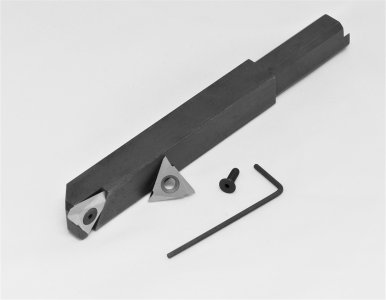


I have a Valenite tool holder using carbide inserts that the one you picture is a copy of. Good choice! I save it for the harder materials (RC 45 and above).Take a look at A.R. Warner; they have a wide range of tool holders that use T-15 HSS inserts. Here is a 1/2" double-ended holder that will do OD & ID (>1-3/8"), 8 – 36 TPI:
View attachment 456158
Carbide inserts are best at higher speeds and at slow speeds chip easily, threading is done at slow speeds, so HSS would be the better choice. You can use carbide, many of us do, just be aware you need to be a lot more careful to avoid chipping.
Take a look at A.R. Warner; they have a wide range of tool holders that use T-15 HSS inserts. Here is a 1/2" double-ended holder that will do OD & ID (>1-3/8"), 8 – 36 TPI:
View attachment 456158
I use carbide inserts for turning almost exclusively, and they work really well, but a threading insert is different and has a weak point that is easy to chip. With manual machines, most of us don’t have the reflexes to thread very fast, so the main advantages to carbide are lost, and HSS is in its happy place at those speeds.Thanks. I was not aware of the issue of chipping at slow speeds.
I will not be doing anything fast, especially threading. No need to thread at warp speed, not doing production runs of anything,
So far, all I have used is carbide inserts for turning and have never really had a problem. Sure I have worn out/chipped a few, but never had a problem with them.
I have that toolholder and inserts, the flat top insert is for steel, and the angled top is for nonferrous I believe. I have used them both ways and haven’t seen much of a difference, but I don’t push things either. The AR Warner toolholder is kind of expensive for what it is, so you should be able to find something considerably cheaper that will work with those inserts. You can even get the inserts at McMaster-Carr, so if you are already ordering project supplies from them, you can add the inserts and avoid a separate shipping charge from somewhere else. The back end of that is for internal threads, but the minimum bore is something like 1.5”, so not that useful for most applications.Curious, what is the difference between the two inserts it comes with? I am not up on the codes/lingo of the inserts.
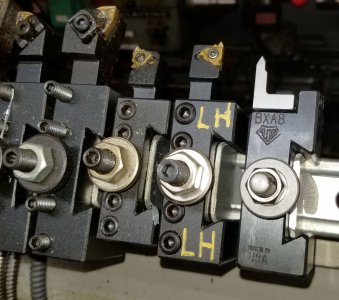
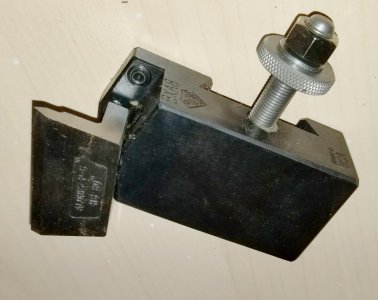
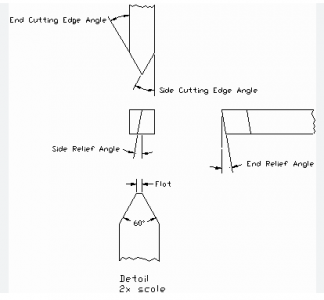
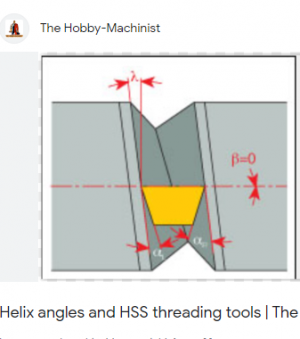
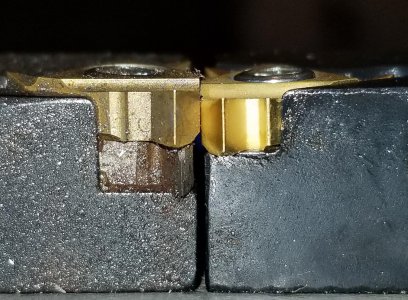
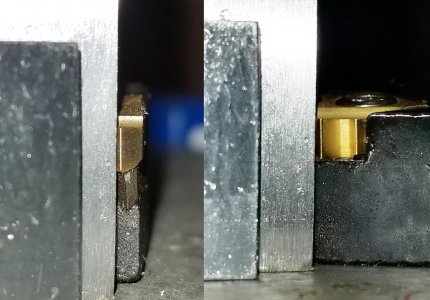
Same here. I get better threads with HSS. I've got inserted carbide tools, don't use them anymore. My first attempts at grinding HSS threading cutters weren't great but worked. With practice it isn't all that hard! Also easy to touch up. I use Joe Pie's method of running the tool upside down and threading from the shoulder out. It allows starting at an exact point W/O any stress.Get yourself a fish tail try grinding one.
It really ain't that hard.
There does appear to be some side relief, but no where near what is called out when grinding a HSS bit. I see maybe ½º to 1º of side relief. I guess that the inserts would be okay for larger diameter and higher TPI stuff, but the smaller diameter and lower TPI stuff may require a re-look.RH/LH insert tools on a plate with a square; looks to have no side relief
Sorry, not meaning to hijack the thread but - That blade is HUGE - what is the purpose of that?+1 on the Aloris HSS threading tool. I use the carbide insert ones and the Aloris, tend to go to the Aloris. I bought mine (BXA size) new off eBay for $125 around 5 years ago. They're probably closer to $150+ now. I bought the carbide insert ones for under $25 including 10 inserts. Yeah, the tips can chip, but the inserts are cheap. It depends on your budget and if you don't mind a little potential downtime having to replace the carbide inserts (though with care they do hold up).
Bruce
View attachment 456166
View attachment 456165
